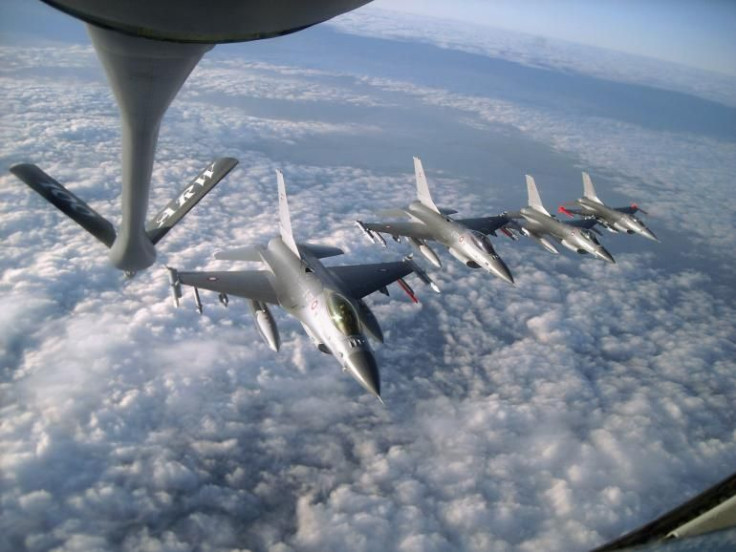Iraq Crisis: How Do US Airstrikes Work? A Step-By-Step Guide, From Authorization To Execution

Nearly nine hours after U.S. President Barack Obama authorized airstrikes against the Islamic State in Iraq and Syria, the first attack against ISIS positions was carried out. The strike marks the first major military action in Iraq by the U.S. since the president withdrew troops in 2011.
What happened?
“Two F/A-18 aircraft dropped 500-pound laser-guided bombs on a mobile artillery piece near Erbil,” Pentagon spokesman Rear Adm. John Kirby said in a statement. Erbil is the capital of Kurdistan, the semi-autonomous region in northern Iraq where the militant group made gains this week, taking over some 17 cities, towns and villages. It’s unclear exactly how many bombs were used, whether the strike was successful, or if the attack led to any ISIS casualties; the U.S. Department of Defense could not be immediately reached for comment.
The strike occurred around 6:45 a.m. EDT -- nine hours and 15 minutes after Obama made a statement about his authorization of airstrikes in Iraq.
Obama authorized the strike. But did he decide the actual target?
While Obama gave the go-ahead for airstrikes in Iraq, the decision to target the particular artillery piece was made by Army Gen. Lloyd Austin III. Austin is the commander of U.S. Central Command, which covers the Persian Gulf and is based in Tampa, Florida.
OK, but why was the mobile artillery piece targeted?
The Islamic extremist group ISIS was using the weapon to attack Kurdish forces defending Erbil. The city is home to U.S. diplomats who serve at the U.S. consulate there. It’s also where American military personnel have been advising Iraqi forces, Obama said in his address to the nation Thursday night. The military advisers are determining whether Kurdish forces, known as the peshmerga, are capable of defending the region, according to the Washington Times.
Part of the reason Obama authorized airstrikes was to prevent ISIS from taking over Erbil.
“We intend to stay vigilant, and [will] take action if these terrorist forces threaten our personnel or facilities anywhere in Iraq, including our consulate in Erbil and our embassy in Baghdad. We’re also providing urgent assistance to Iraqi government and Kurdish forces so they can more effectively wage the fight against” ISIS, the president said.
How does an airstrike work?
Whether Friday morning’s airstrike was preplanned or time-sensitive, the strike was the result of a multi-step process, according to Popular Mechanics.
Preplanned strikes start with a goal, and then assessing targets to strike based on that objective. The military then decides what kind of plane to use for the strike. Intelligence reports are used to determine the target. Before the aircraft heads toward the target, pilots are told of locations of friendly forces to ensure there are no casualties from friendly fire. Unless the pilots see a target of higher importance, the strike goes into effect. The military then assesses the strike to determine if it was successful.
In the case of a time-sensitive target, it’s usually a drone, not military pre-planners, who seek the target. The drone’s sensor then fixes on the target and relays information about the target’s movements to the aircraft being used to drop bombs on the target. The decision on what aircraft to use is made quickly, and is made depending on what aircraft are available at the time of the impending strike. If the military leader who usually decides on the strike isn’t available, a military commander gives the go-ahead for the strike. An order is then given to strike the target, and an assessment is made on whether the goal was achieved. If not, a second strike would be ordered.
Is this it?
Obama’s authorization covers more than just one strike. Friday’s strike was just the first following the authorization.
“To stop the advance on Erbil, I’ve directed our military to take targeted strikes against ISIL terrorist convoys should they move toward the city,” he said.
© Copyright IBTimes 2024. All rights reserved.












